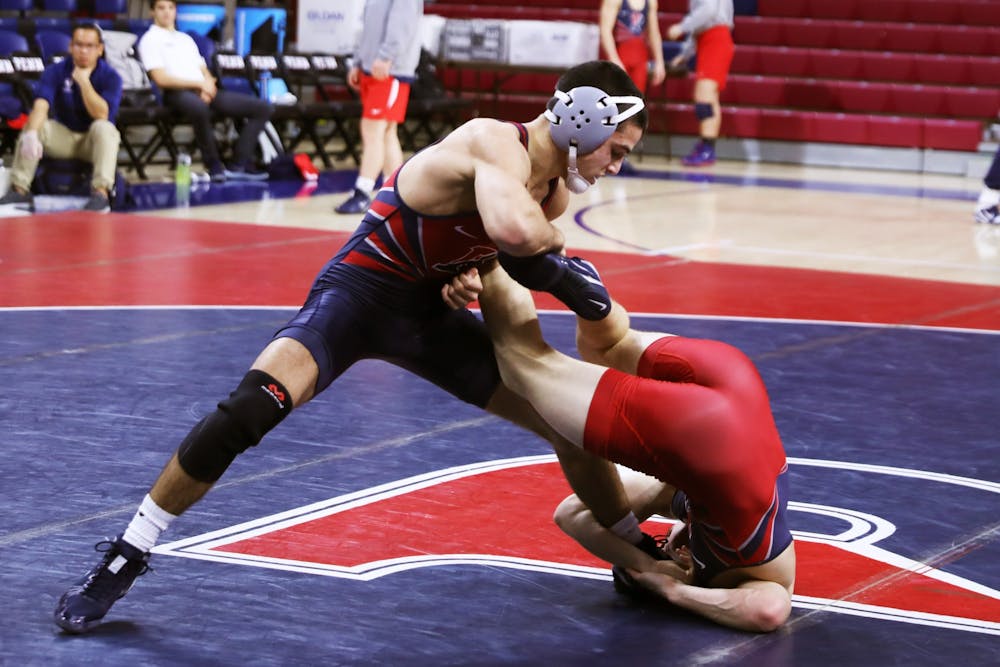
Sophomore Carmen Ferrante made it to the NCAA Championships in the 125-pound weight class in his rookie season.
Credit: Nicole FridlingWrestling is more than just a sport; it’s a lifestyle.
When you think of wrestling, you might imagine two people on a mat up close trying to push the other person down. However, there’s actually a methodical approach before the bell rings.
A major component to wrestling is that players wrestle opponents in their weight classes. There are 10 main weight classes, ranging from 133 pounds to 285 pounds, though there are more weight classes on the lower end of this range. Players often will strategically gain or lose weight to gain a competitive advantage, which can be a strenuous task. Sophomores Carmen Ferrante and Doug Zapf know what it takes to put on weight in a short period of time.
Carmen Ferrante is 133 pounds, but last year, he wrestled at 125. He was one of the most successful Quakers on the mat and made it to the 2019 NCAA Championship Qualifiers.
“I think just the process is driven by a number of factors: your weight class last year, how you felt about it," Ferrante said. "If it was super easy for you last year, you think about moving down a weight class, but if you want more of a challenge, you usually want to put on weight.”
With Ferrante’s success, he’s hoping to set higher goals in his second year for the Red and Blue.
“Last year, I was fortunate enough to make it to Nationals, and I’d obviously like to get back there, make it even further in that tournament, and just be able to lead the team as best I can.”
For Zapf, it made sense for him to bulk up heading into the season.
“At the end of last season, I really didn’t know what I was going to do," Zapf said. "I was 133 last year, but I decided to put on weight, so I lifted and ate a lot over the summer and now I'm 141 this season."
Different weight classes have different types of wrestlers. Last year, the 133 weight class was particularly competitive, according to Ferrante.
“Last year [the competitive weight class] was 133 across the country. It was a pretty stacked weight class, [but] you really can’t choose one," he said. "Each weight class has its own challenges for sure."
With weight changes being a common part of college wrestling, Penn Athletics has stepped in, providing resources so players can ensure that they're putting on weight the right way.
“We have this thing called the Bod Pod that helps us track our progress," Zapf said. "This provided a ton of help to see the muscle mass I put on, my growth in height, and my weight."
Additionally, wrestlers' diets are especially important for changing weight classes. Ferrante emphasized that gaining healthy weight is harder than it seems.
“Starting the diet to gain weight is hard because you’re tempted to eat bad because you want to gain weight," Ferrante said. "You've got to put on healthy weight though. After a while, you get used to it."
Ferrante and Zapf will be in action this weekend at the Palestra, where they'll represent the Quakers in the Keystone Classic.
"My hope is that all this dieting pays off," Zapf said. "But I've got to stay strong mentally too because that's very important. There are some great wrestlers that I've got to be prepared for."
The Daily Pennsylvanian is an independent, student-run newspaper. Please consider making a donation to support the coverage that shapes the University. Your generosity ensures a future of strong journalism at Penn.
Donate







